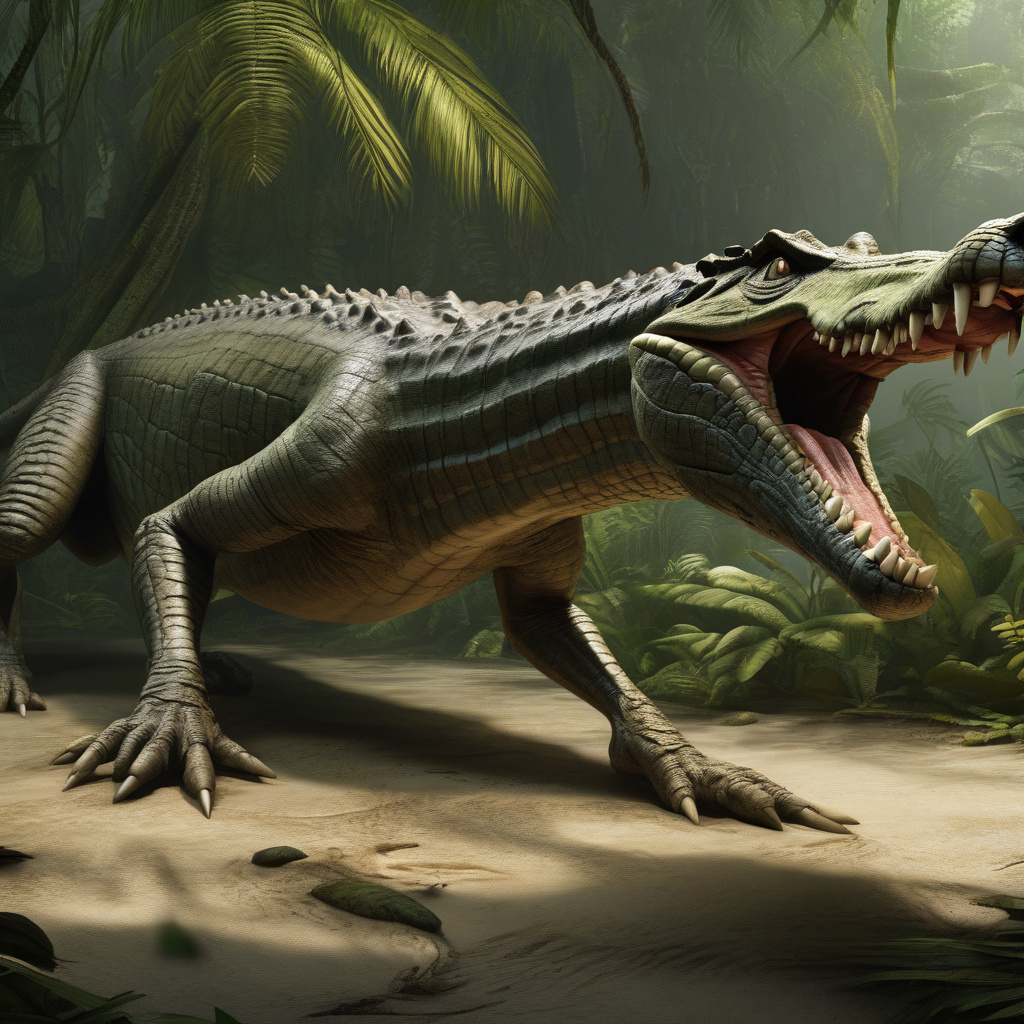20-foot Greyhound-Like Crocodile Cousin Ruled Caribbean After Dinosaur Downfall
Researchers found a sebecid, a greyhound-looking crocodile in the Caribbean, and it’s changing the narrative of prehistoric predators in the region. This fascinating discovery sheds light on a lesser-known but equally formidable creature that once dominated the ancient ecosystems of the Caribbean following the downfall of the dinosaurs.
The sebecid, named after the South American sebecosuchians, is a distant cousin of modern crocodiles. Measuring up to 20 feet in length, this massive reptile had a slender build resembling that of a greyhound, which is quite different from the bulky and robust appearance of its contemporary relatives. Despite its sleek physique, the sebecid was a top predator during its time, showcasing the diverse range of adaptations that ancient crocodiles developed to thrive in various environments.
Unlike the modern image of crocodiles lurking in murky waters, the sebecid was believed to have been a swift and agile predator, capable of chasing down prey on land. Its elongated legs and streamlined body suggest that it was well-suited for terrestrial locomotion, indicating a hunting style that differed from the ambush tactics commonly associated with crocodilians today.
The discovery of the sebecid challenges the traditional view of post-dinosaur Caribbean fauna, highlighting the region’s rich paleobiodiversity and the complex interactions between species that existed millions of years ago. While much attention has been focused on the megafauna of the Americas and Africa during the Cenozoic era, little is known about the unique evolutionary paths taken by animals in the Caribbean islands.
By piecing together the fossil record and analyzing the anatomical features of the sebecid, researchers can reconstruct the ancient ecosystems of the Caribbean and gain insights into how environmental factors shaped the evolution of prehistoric predators in the region. This information not only expands our knowledge of Earth’s past but also provides valuable context for understanding the present-day biodiversity of the Caribbean and the conservation challenges faced by its endemic species.
The sebecid’s reign as a dominant predator in the Caribbean highlights the importance of exploring lesser-known branches of the evolutionary tree and uncovering the hidden diversity of prehistoric life. As researchers continue to unearth new fossil evidence and refine their understanding of ancient ecosystems, the story of the sebecid serves as a reminder of the intricate web of life that has shaped the world we see today.
In conclusion, the discovery of the 20-foot greyhound-like crocodile cousin in the Caribbean offers a fascinating glimpse into the prehistoric past of the region and underscores the need for further exploration and research to unravel the mysteries of ancient biodiversity. By studying the sebecid and other enigmatic creatures of the past, we can piece together the puzzle of evolution and gain a deeper appreciation for the interconnectedness of life on Earth.
#CrocodileCousin #CaribbeanPredator #AncientEcosystems #PrehistoricDiscovery #Paleobiodiversity












